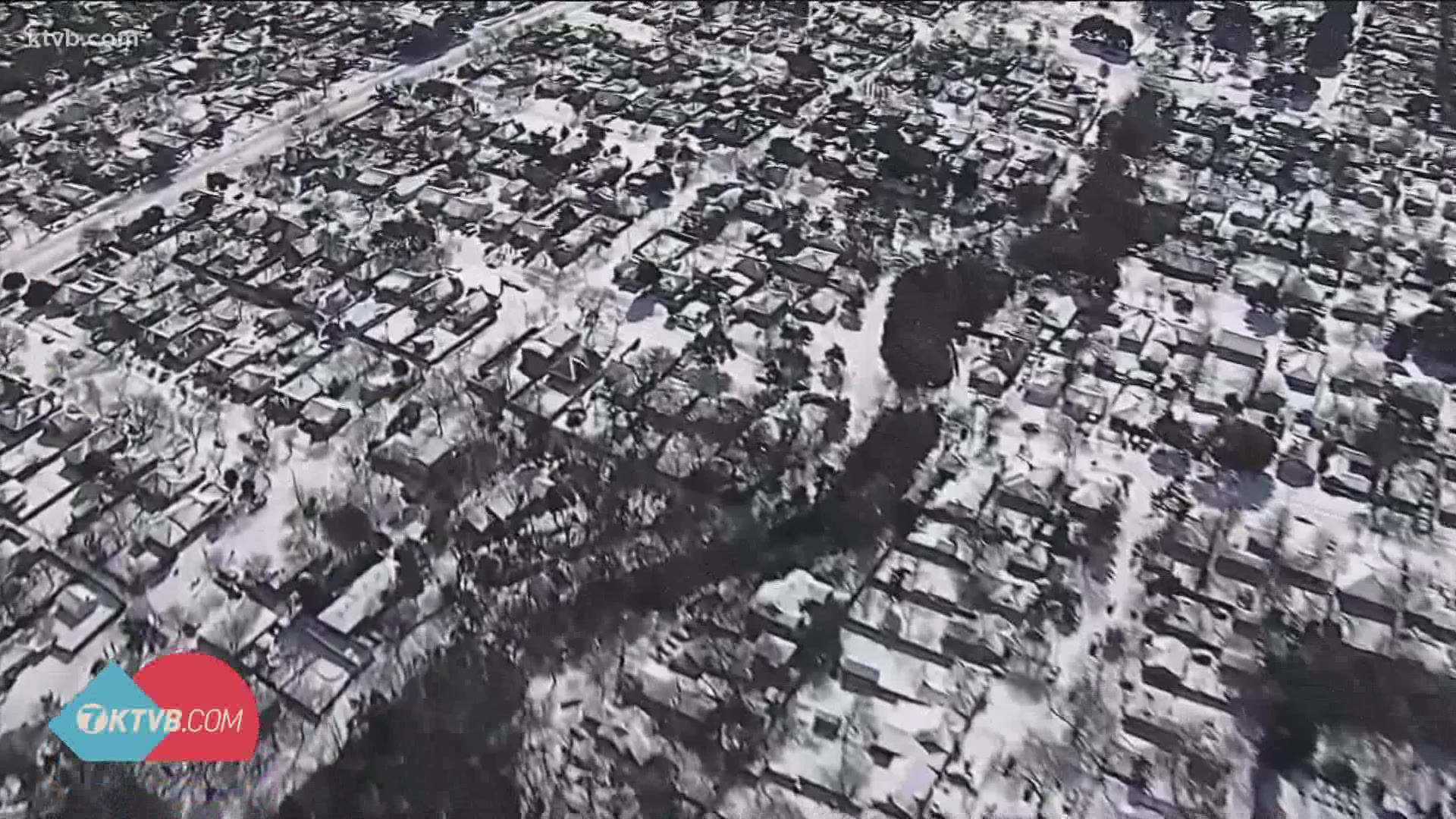BOISE, Idaho — A once in a lifetime storm, a combination of snow and frigid temperatures, shut down almost an entire state's power grid.
By Tuesday, nearly 4.5 million Texans were without power. That's like the population of three Idaho's.
And it's lasted for more than three days.
How could this happen?
Experts point to two things, the severity of the storm and the singularity of the power grid.
These types of extreme temps in Texas are rare, so rare that there was no safeguard against a failure of the infrastructure.
But probably the biggest issue, the Lone Star State is alone in its production and access to power.
We spoke with a doctor of civil engineering from Boise State University, whose expertise is in climate analysis.
Dr. Mojtabe Sadegh told us there are three main power grids in the United States -- the Eastern Interconnection, the Western Interconnection, and the Electric Reliability Council of Texas.
ERCOT as it's known, is not it's not connected to the other interconnections.
Been this way for decades.
Texas didn't want to deal with federal regulations to join. So, they are basically an island of electricity. And when ERCOT, which accounts for about 90 percent of the state's power, when that goes down...well, there's really not much that can be done.
That's not how this works in Idaho.
“Unfortunately what is happening in Texas, what's happening is not only a failure of their own system,” said Dr. Sadegh, "it's because they're not connected to elsewhere in the country, so now that their system has failed, no one else can help them.”
“So, if Texas was a part of either one of these other grids, we could have been sending them power and it wouldn't have lasted as long, is that correct?” asked Brian Holmes.
“That's correct, I mean look at in Oklahoma, why don't we have the same situation in Oklahoma? It's just a couple hours drive,” said Sadegh.
“Could something like this happen in Idaho?” asked Brian.
“I don't expect this to happen in the cold season in Idaho,” he said. “We have the infrastructure set up for the cold season. And we are connected to the rest of the system, so if our system fails we should be fine. My concern is going to be for summer if a large severe drought happens, meaning that our hydropower generation going down. And if you have wildfires that impact the solar panels, then you're going to have an issue with providing electricity for the state. It's not that we aren’t going to have some power outages, but we are not going to have a power outage for three days.”
“I guess what you're saying is, in order for something like this to happen in Idaho -- serious drought, major fires -- and this would have to be a wide area that this is covering?” asked Brian.
“Exactly. So it should be multiple states, maybe the western U.S. entirely, so that we go dark,” Sadegh said.
“That would be pretty catastrophic,” Brian said.
“That would be, we cannot say it's not going to happen,” Sadegh said. “If you look at the 2020 fire season, we see that Colorado, Oregon, California were all burning at the same time, so something like that is not out of imagination, but we're hoping that it will not happen.”
So basically most of Idaho is set up to handle extreme heat and cold and for a length of time.
We also lean a little more toward renewable energy, which is a good thing.
But it can be a bad thing, too. A long severe drought could do some damage to our power source.
Idaho Power, the state's largest provider, gets nearly 45 percent of its energy from hydro.
Some of you may remember, there was a time when we were really paying attention to power.
According to Idaho Power, our all-time summer peak load occurred in 2017.
But even then, there wasn't a significant threat to the service.
As Dr. Sadegh said, we might lose hours, not days.
More than 150,000 homes are still without power in Texas, millions are still under a boil water order and 44 people have died across the South because of Winter Storm Uri.
Join 'The 208' conversation:
- Text us at (208) 321-5614
- E-mail us at the208@ktvb.com
- Join our The 208 Facebook group: https://www.facebook.com/groups/the208KTVB/
- Follow us on Twitter: @the208KTVB or tweet #the208 and #SoIdaho
- Follow us on Instagram: @the208KTVB
- Bookmark our landing page: /the-208
- And we also turn each episode into a podcast or Podbeam
- Still reading this list? We're on YouTube, too:

